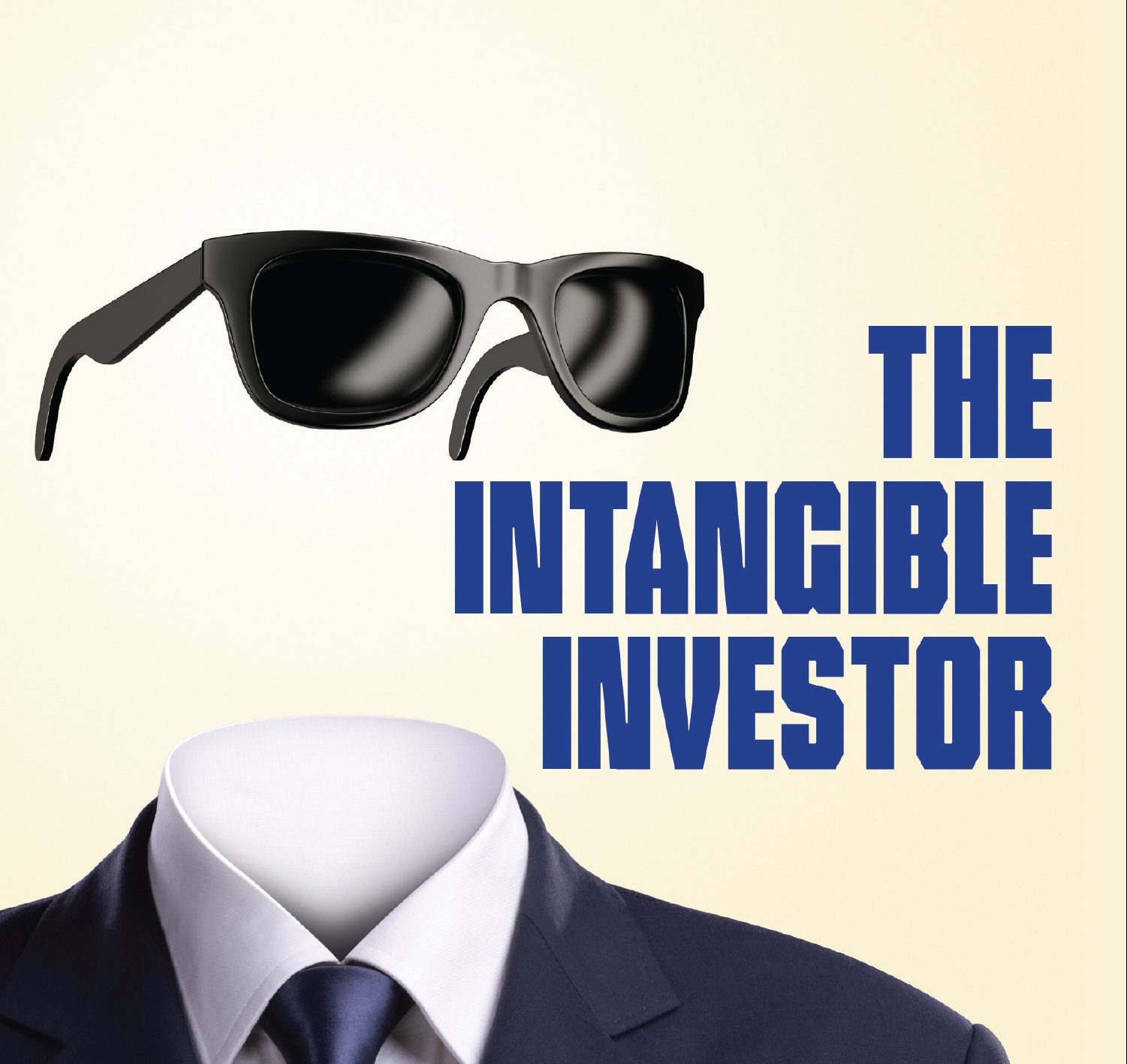“Dozens of articles in recent months have blamed intellectual property for the scarcity of non-franchise films…. [But] IP is not the culprit in this scenario.”
 Reports of the death of the movies at the hands of IP have been greatly exaggerated.
Reports of the death of the movies at the hands of IP have been greatly exaggerated.
Movie ticket sales are down and may never recover from pre-pandemic highs. The actors and writers strike will not help but the scarcity of new product might. The studios are racing to screen franchise movies that put people back into theater seats. IP rights associated with franchises – Spider-Man, Iron Man, the Avengers, Indiana Jones, Star Wars, Mission Impossible – are being blamed for turning the movies into a veritable video game more focused on effects than people.
One UK magazine calls the current state of movies the “IP Apocalypse.” Another publication says, “Intellectual property killed the movie star.” Movie stars are very much alive. They are simply hiding in digital costumes, taking on fewer of the roles serious-minded movie-goers would like them to. Dozens of articles in recent months have blamed intellectual property for the scarcity of non-franchise films. “How the Marvel Cinematic Universe Swallowed Hollywood” in The New Yorker typifies these articles. “The Numbing Rise of I.P. TV,” is another.
Bloomberg said that “the IP-to-movie playbook is by now well established,” referring to the well-known characters on which many movies are now based. The fact is that all movies are based on some type of copyrighted material, a book, script or otherwise, and use copyrighted music and trademarked brands. IP is not the culprit in this scenario. Like a patented blockbuster drug or covid vaccine, the most valuable IP rights are an easy target. Franchise films dominate not only because they are more marketable and a safer bet for investors, but because people want to see them. Other IP-based options exist.
The economics of the movie industry, never simple, are not that complex. Tar was an excellent, if dark film with an extraordinary performance from Cate Blanchett, perhaps the greatest of her storied career. It cost $35 million to make and market and despite positive reviews grossed $29 million worldwide, just $6.8 million in the U.S. The rule of thumb is that it needs to make twice what it cost to break even.
Funding and distributing movies internationally require a huge amount of capital and a willingness to take on multiple risks simultaneously. Franchise characters can mitigate the risk. As an investor, would you rather pay to see Blanchett as Lydia Tar or as Hela in Thor: Ragnarok? Thor: Ragnarok grossed $855 million worldwide. That payday likely allowed her to do Tar, a film that may not have otherwise been made.
 The amount of time a movie has to find an audience today is basically a single weekend. In three weeks, a good film may be gone from theaters, forever relegated to Netflix or Prime. The neighborhood movie house and most art cinemas are gone and so, too, the opportunity for more obscure releases to find an audience. Films need to at least cover their costs to continue to be made. If people want to see independent films projected on a theater screen, they need to come out and support them in person by buying tickets, whatever the cost, and not wait for a streaming service to include them.
The amount of time a movie has to find an audience today is basically a single weekend. In three weeks, a good film may be gone from theaters, forever relegated to Netflix or Prime. The neighborhood movie house and most art cinemas are gone and so, too, the opportunity for more obscure releases to find an audience. Films need to at least cover their costs to continue to be made. If people want to see independent films projected on a theater screen, they need to come out and support them in person by buying tickets, whatever the cost, and not wait for a streaming service to include them.
“Many of the most critically acclaimed films this century got their start as box office flops,” writes Variety. It’s become abundantly clear that you can’t judge the quality of a movie by its grosses – especially opening weekend grosses. It’s easy to blame intellectual property rights for the precipitous state of the movies. Antipathy towards all things IP, from inventions to vaccines, copyrighted recordings and branded goods, is epidemic. IP is the bad juju that’s messing everything up.
The actors’ and writers’ strike will add to the economic challenges movies face. The impending rise in costs and creator participation may in fact exacerbate the trend toward bigger, more franchise-driven movies, possibly with fewer recognizable stars. It would be nice if more power on the part of writers and actors could result in a wider range of film offerings. That may be wishful thinking. Audiences, however, will have the final say.
Franchise films with familiar characters are currently a safer bet for capital-dependent studios. While they still present significant risk, they offer blockbuster potential and a myriad of licensing opportunities, and not just for toys. Their revenues can be somewhat more predictably modeled to reassure cost-sharing co-producers and balance sheet-driven shareholders.
A Slowly Dying Business
The first quarter of 2023 may have generated decent box office numbers compared with 2022 and 2021, but ticket sales in the United States and Canada are down 21% from the same pre-pandemic period in 2019 – and that is not allowing for ticket price inflation. Disappointing results were a surprise for “Indiana Jones and the Dial of Destiny,” The Flash,” and “Little Mermaid.”
“It’s a slowly dying business,” reports The New York Times, “but at least it is better than a quickly dying one.” Global ticket sales in 2019 were 7.9 billion. PwC projects that they may reach 7.2 billion by 2027.
Blaming so-called franchise movies is not the answer. A series of changes, technological, economic and cultural have a lot to do with it. At least some of the blame must be attributed to audiences who, except on rare occasions, no longer wish to see movies in theaters, and actors, writers and directors, who opt for biggest possible pay days.
Robert Downey, Jr., a respected actor with a broad range of credits, has played the likes of superhero Tony Stark in three Iron Man blockbusters and who also starred in Avenger and Spider-Man blockbusters. He rarely appears in little films that are shot with real people. He has a role in the relatively modest biopic, Oppenheimer, which cost $100 million. Some are looking at the film as a sort of litmus test for the future of cinema. Oppenheimer, which opened on July 21, ironically the same day as Barbie, did $82 million in opening weekend revenue—excellent business, especially for a non-franchise movie. The film, which cost $100 million to make, is well on its way to being a big earner.
Barbie’s opening weekend was $162 million, the largest of 2023 and more than Spider-Man: Across the Spider-Verse, putting it on track to enter the exclusive billion-dollar club. More important, from an investor perspective, it cost only $145 million to make and release—about half other recent franchise features, more of which lost money. The performance of Barbie and Oppenheimer are important in the continually evolving industry, but neither is going to determine the future of cinema.
In an effort to encourage ticket sales, Oppenheimer producer Universal Pictures has announced it will not make the film available to stream until 100 days after its theatrical release. (The book on which Oppenheimer is based, American Prometheus, a Pulitzer Prize winner, is terrific. Get a free sample here.) Downey plays Oppenheimer’s nemesis, Lewis Strauss, in the story about the charismatic physicist who led the team that built the atomic bomb and lived to regret it.
If actors can play superheroes in front of a green screen, they can still play people in front of a camera. Iron Man (Downey, Jr.) as Chairman of the Atomic Energy Commission is pretty ironic, if you ask me. Not many will know they are one and the same.
The reasons for audiences to reject movie-going and more challenging films are complex. Theater-quality audio and 4K video on a relatively large screen is easily brought into their homes. The cost of a night out at the movies has skyrocketed; the inflationary cost of tickets, transportation and food are factors. Post-Covid, people are reluctant about moving from their homes (or going into the office) if they do not have to. Attention spans, too, are decreasing—a victim of social media and short-form videos, like TikTok.
Billion Dollar Grosses
Studios today are more comfortable betting on recognizable characters and merchandising they can leverage. “Barbieheimer” is a reminder that pre-release publicity matters. To date, there are 52 movies that have grossed more than $1 billion in worldwide revenues. It is worth perusing the list. The vast majority are franchise-movies, based on established storylines or characters. These larger-than-life experiences transcend the big screen, social media and almost everything else. They are best experienced first-hand, like a rock concert, and re-experienced at home.
This is where some otherwise rational people think strong IP takes a negative turn. Licensing revenues are so meaningful that the cost of the film becomes somewhat negligible. Spiderman 3 cost $364 million to make and distribute. Recent updates of Star Wars and Jurassic World cost more than a half a billion dollars. Production costs are increasing for the most effects-laden films and prints and marketing add substantially to the final cost. IP helps to mitigate risk – not eliminate it.
Rewarding proven independent directors, auteurs, like Greta Gerwig (Lady Bird, Frances Ha,Little Women) with franchise movies, like Barbie has consequences. Even if these movies fail, both the director and IP owner stand to make millions. That is why there is so much pre-release hype for movies like Barbie. Even if people don’t see the movie, they are influenced by it and susceptible to the merchandizing. If this type of movie succeeds and generates a billion or more dollars, the directors, some of the actors and the studios stand to make a small fortune. Just ask James Cameron, responsible for two Avatar movies and Titanic. The three together generated more than $3 billion at the box office alone.
There is a long history in Hollywood of actors and directors making “money films” to help finance other, more serious work. It is not clear how much that is happening today. (Gerwig’s husband and Barbie co-writer, Noah Baumbach, is an auteur in his own right, with several arthouse successes). Whose responsibility is it to save cinema? The studios? The cultural elite? The actors? There needs to be an economic solution to the current lack of variety in movie content. It is unlikely that public companies with an eye on quarterly earnings will be stepping up.
“We used to think of ourselves and present ourselves as a manufacturing company,” Mattel CEO Ynon Kreiz told the Times Magazine recently. “The specialty was: We make items. Now, we are an I.P. company that is managing franchises.”
Respected director Martin Scorsese (Goodfellas, Casino, The Departed) has railed against the big, franchise-driven movies because they have chased away the films with more serious themes and relationships. He does not consider them films at all.
“I don’t see them,” he told IndieWire. “I tried, you know? But that’s not cinema,” Scorsese told another publication. “Honestly, the closest I can think of them, as well made as they are, with actors doing the best they can under the circumstances, is theme parks. It isn’t the cinema of human beings trying to convey emotional, psychological experiences to another human being.”
A Time and Place
In the late 1970s, I taught film courses at Columbia University while working on a Ph.D. I was providing investor relations to New World Entertainment when it bought Marvel in 1986 for a meager $74 million. Barely anyone noticed. Later, in 1997, I handled investor relations for Marvel when it was owned in bankruptcy by corporate raider Carl Icahn, following a period of ownership by Ron Perelman’s MacAndrews and Forbes.
I met Stan Lee on a cruise around lower Manhattan celebrating the New World Purchase. A dozen investors and analysts were present. No one seemed to care much about him or Marvel, except a couple of investors who were Spidey fans. Lee told me that he enjoyed being the face of Marvel but that his storyline days were over. If he could, he wanted to make a difference in how his beloved characters were used and seen.
Marvel, at the time, was a decidedly modest comic book publisher with a handful of toy licensing deals. It was a company run for its fans by talented artists and writers. Titanic director James Cameron wanted to buy the rights to Spider-Man but the trustee, law firm Gibbons Del Deo, showing business acumen and vision, turned him down. It did not want to sell assets until Marvel emerged from Chapter 11 and the property would have a higher market value.
Marvel did emerge from Chapter 11 in 1998 with $1.5 billion in debt and went on to sell to Disney in 2009 for $4 billion. Characters and franchises can be attractive to investors. They provide some level of predictability in an otherwise chaotic movie world, and they have box office and merchandising upside. Studios are about making money first and art later, if it makes sense. They are not against creating thoughtful movies. Talented people are retained to help them get the job done. Bankable actors and directors have more power than they think; so do audiences.
It is a good sign that the studios still care enough to hire name actors and directors who can bring something more than licensing to a franchise movie. Award-winning actor Kenneth Branagh is responsible for directing Cinderella ($500 million+ box office with a strong cast) and Thor ($865 million), and still acts and directs in Shakespeare films. His $11 million, award-winning indie, Belfast, brought in $50 million worldwide.
Films are still meant to be projected. They look best on the big screen in a theater full of people able to control their urge to talk, eat and text for a full 100 minutes. Audiences are not used to listening and watching actively. There is a place for franchise movies that rely on the latest special effects and a place for those films that reflect peoples’ lives. There is a history of big movies helping finance smaller, more difficult ones. It’s not an either/or proposition. The movies have always been a strangely democratic medium. Audiences can still call the shots. No amount of IP-based licensing or publicity will change that.
Image Source: Deposit Photos
Author: fergregory
Image ID: 12283216

![[IPWatchdog Logo]](https://ipwatchdog.com/wp-content/themes/IPWatchdog%20-%202023/assets/images/temp/logo-small@2x.png)

![[Advertisement]](https://ipwatchdog.com/wp-content/uploads/2024/04/UnitedLex-May-2-2024-sidebar-700x500-1.jpg)
![[Advertisement]](https://ipwatchdog.com/wp-content/uploads/2024/04/Artificial-Intelligence-2024-REPLAY-sidebar-700x500-corrected.jpg)
![[Advertisement]](https://ipwatchdog.com/wp-content/uploads/2024/04/Patent-Litigation-Masters-2024-sidebar-700x500-1.jpg)

![[Advertisement]](https://ipwatchdog.com/wp-content/uploads/2021/12/WEBINAR-336-x-280-px.png)
![[Advertisement]](https://ipwatchdog.com/wp-content/uploads/2021/12/2021-Patent-Practice-on-Demand-recorded-Feb-2021-336-x-280.jpg)
![[Advertisement]](https://ipwatchdog.com/wp-content/uploads/2021/12/Ad-4-The-Invent-Patent-System™.png)






Join the Discussion
One comment so far.
Frederick Wasser
August 4, 2023 10:05 amBruce Berman is making an important point in arguing that IP does not, in itself, account for the rise of franchises. Indeed we may be finally exiting the age of franchises that I date back to Star Wars. The entire cultural role of theatrical movies may be changing and such times the link between IP and franchises seems like small potatoes. Berman is giving us a useful reminder.